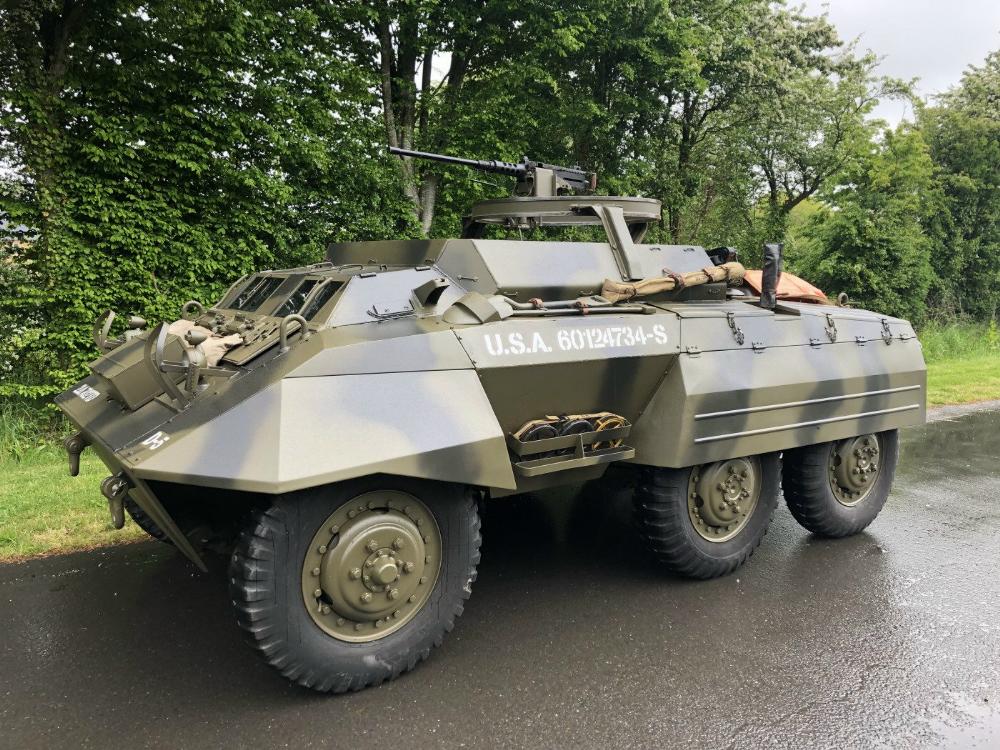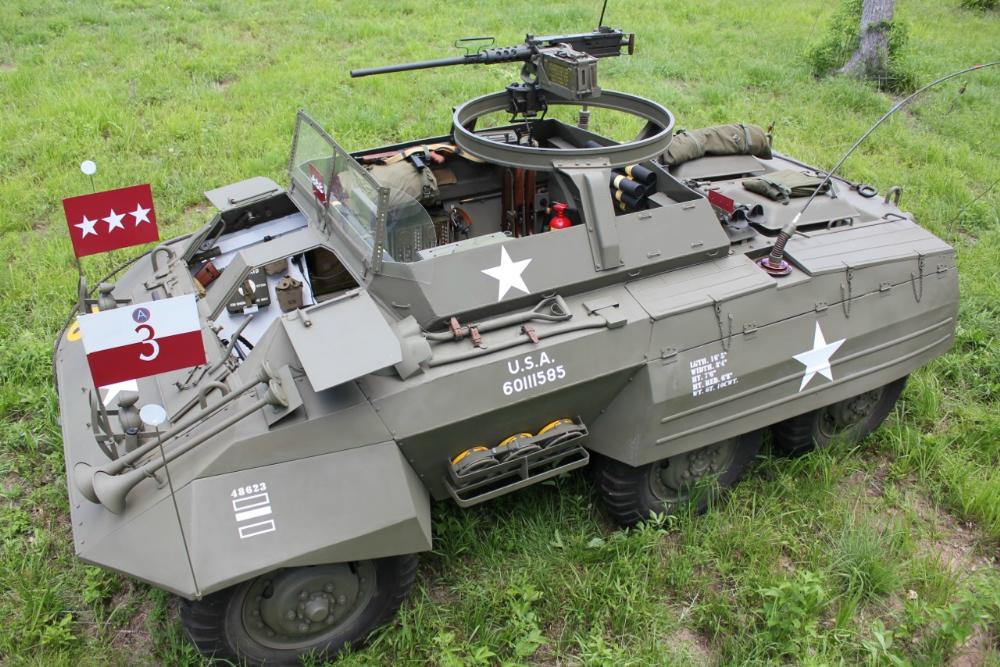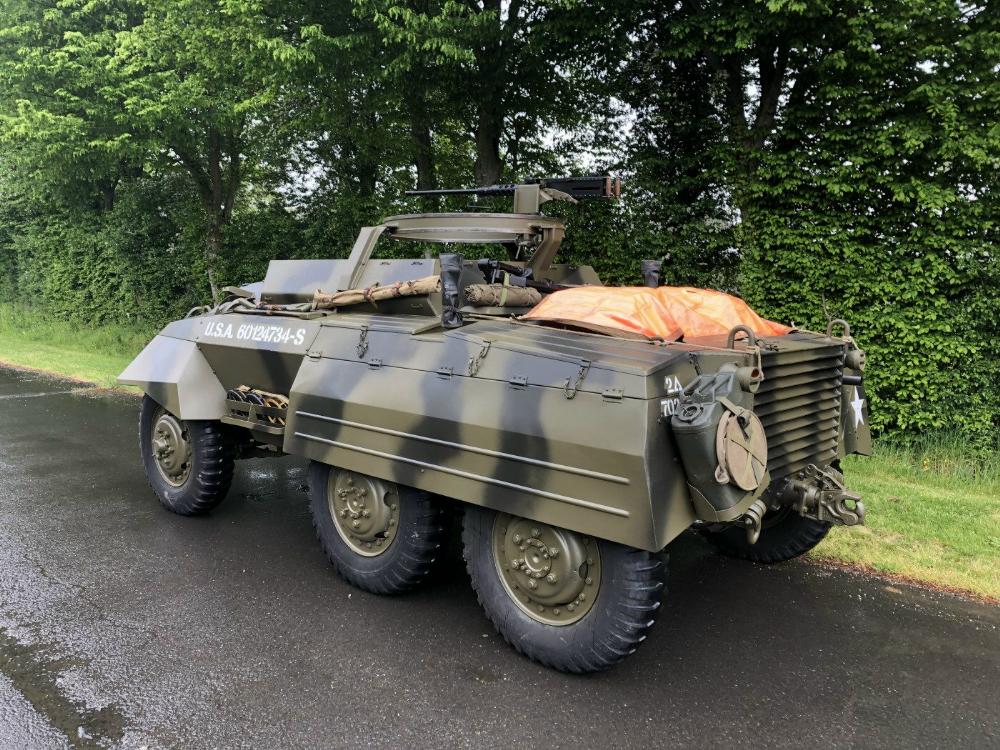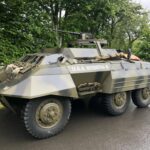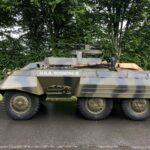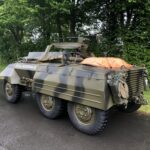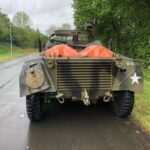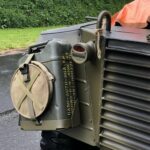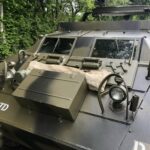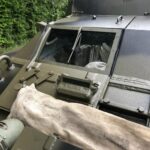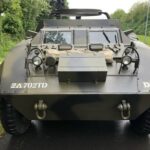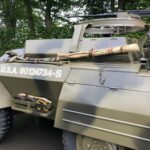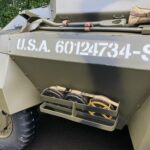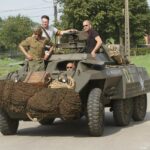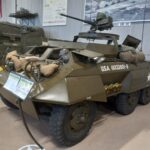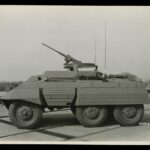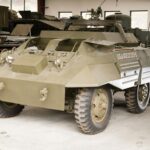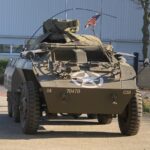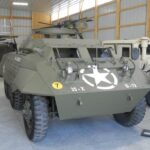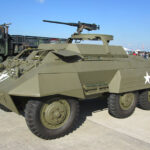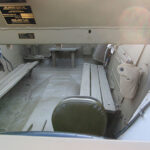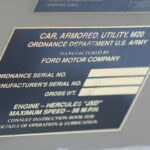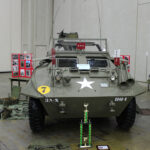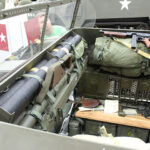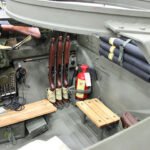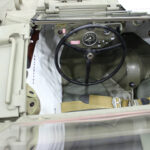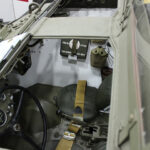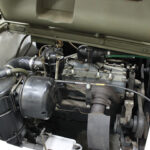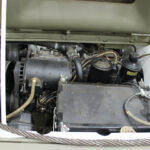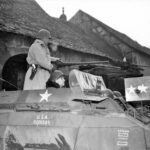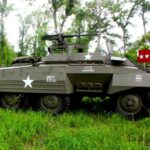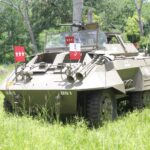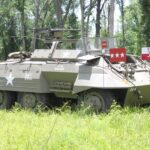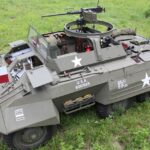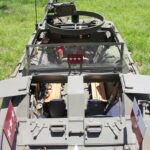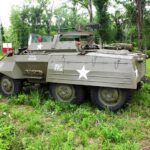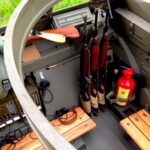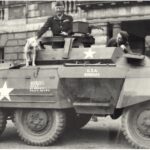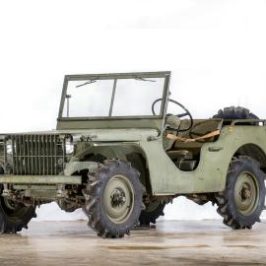From 1943-1945 Ford made the M20 armored car that was used by the U.S. Army as a command car and a reconnaissance vehicle. The vehicle featured six-wheel drive, a cruising range of 400 miles, and a top speed of 56 miles per hour. Armor plating, up to 3/4-inch thick, and a top-mounted .50 caliber machine gun provided further defense. Ford built 3,791 M20 vehicles, all at its Chicago plant. Some resources list St. Paul, Minnesota as the production location, but that is where the M8’s were built. The M20’s were only built in Chicago.
The M20 was primarily to serve as a commander’s vehicle for in-the-field work and lacked the cannon-armed turret of its M8 sister. Instead, an open-topped hull was used to provide unfettered access for the commander and crew to the goings on outside of the vehicle – whether observing maneuvers or artillery fire or other battlefield-related work. The M20 was simply armed through a single 0.50 M2 Browning heavy machine gun for defense against low-flying aircraft, light-armored vehicles, or infantry. This could be replaced with a single 0.30 caliber Browning M1919 machine gun which fired the smaller cartridge and therefore was allowed more ammunition boxes. The gun was fitted to trolley-and-cradle arrangement to make it trainable, and this setup sat within a M49 series ring mount. Beginning in August of 1944, the mount was upgraded to the M66 standard.
A typical operating crew number six personnel. In addition to the provided main armament, it was strongly recommended that the crew personally arm themselves on any journey as insurance should they come under fire from the enemy or be separated from the main fighting force. As such, operators stocked their vehicles with manner of small arms including carbines, service rifles, submachine guns, pistols, hand grenades, and anti-tank mines.
(General George Patton’s M20)
General Eisenhower assigned General George S. Patton Jr. to command the Third United States Army in February of 1944, but it was kept secret from everyone but the two of them and General Marshal. That is a whole other story. As Patton assembled his beloved Third Army in England, he also assembled his personal motor pool. In early 1944, Patton had assigned to him two Jeeps, a 3/4-ton Dodge Command Car, a Packard, a CCKW Mobile command headquarters van and an M20 Armored car.
It was in April of 1944 at Peover England, where Patton’s headquarters was located, that this armored car was brought to Patton’s HQ for him to inspect. The M 20 was powered by a Hercules JXD 6 cylinder engine and had no governor. It was rated as capable of 57 miles per an hour, which was unheard of at the time. Patton would certainly have seen just how fast he could get it to go. Patton’s approach could be heard for miles down those duty August roads. As he did in all of his vehicles, he equipped them with duel air horns made by Buell Air horn company. They were made of brass, but painted OD and the bell was the same as the trombones of the period. The horns, coupled with the siren made an unmistakable announcement that General Patton was coming to the front.
Check out General Patton’s M20
Specifications:
Net weight: 12,800 lbs.
Gross weight: 16,650 lbs.
Length: 16′ 4” (197-inches)
Width: 8′ 3” (100-inches)
Height: 7′ 7” (91-inches)
Crew: 6
Armor:
- Hull front: .75” (19-mm)
- Turret front: .75” (19-mm)
Weapons:
- Primary – 1x .50-cal M2HB heavy machine gun
- Secondary – Provision for: 5x .30-cal M1 Carbine, 1x 2.36-inch Rocket Launcher (Bazooka) M9A1
Ammunition:
- 1,000x .50-cal
- 500x .30-cal Carbine
- 10x 2.36-inch rockets for M9A1
Engine: Hercules JXD 6-cylinder / 320 cu. in. (5.25L) / 110-hp 220 lb. ft. torque /
Power/weight: 14.1-hp/ton
Fuel Capacity: 56-USG (211-l) Gasoline
Range: 350-miles (563-km)
Video:
More Photos:
Click images to enlarge.

